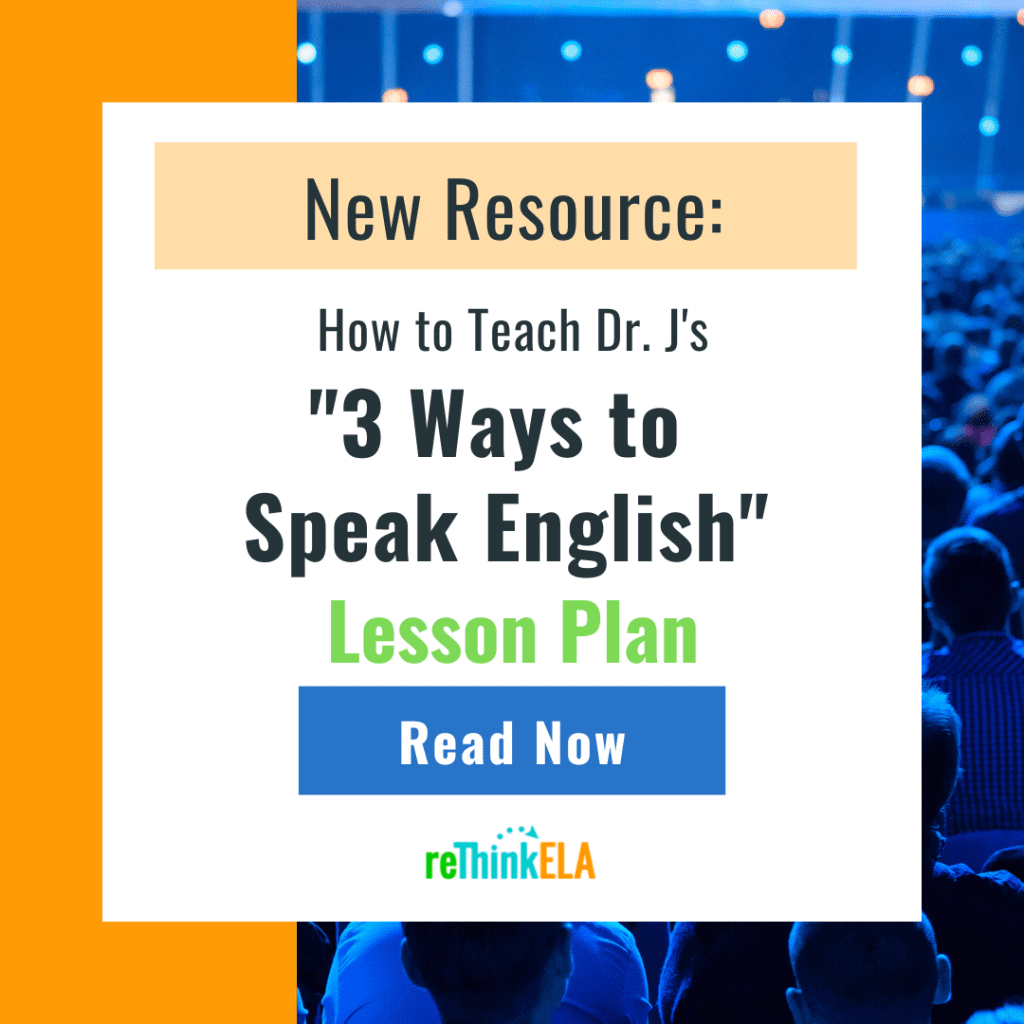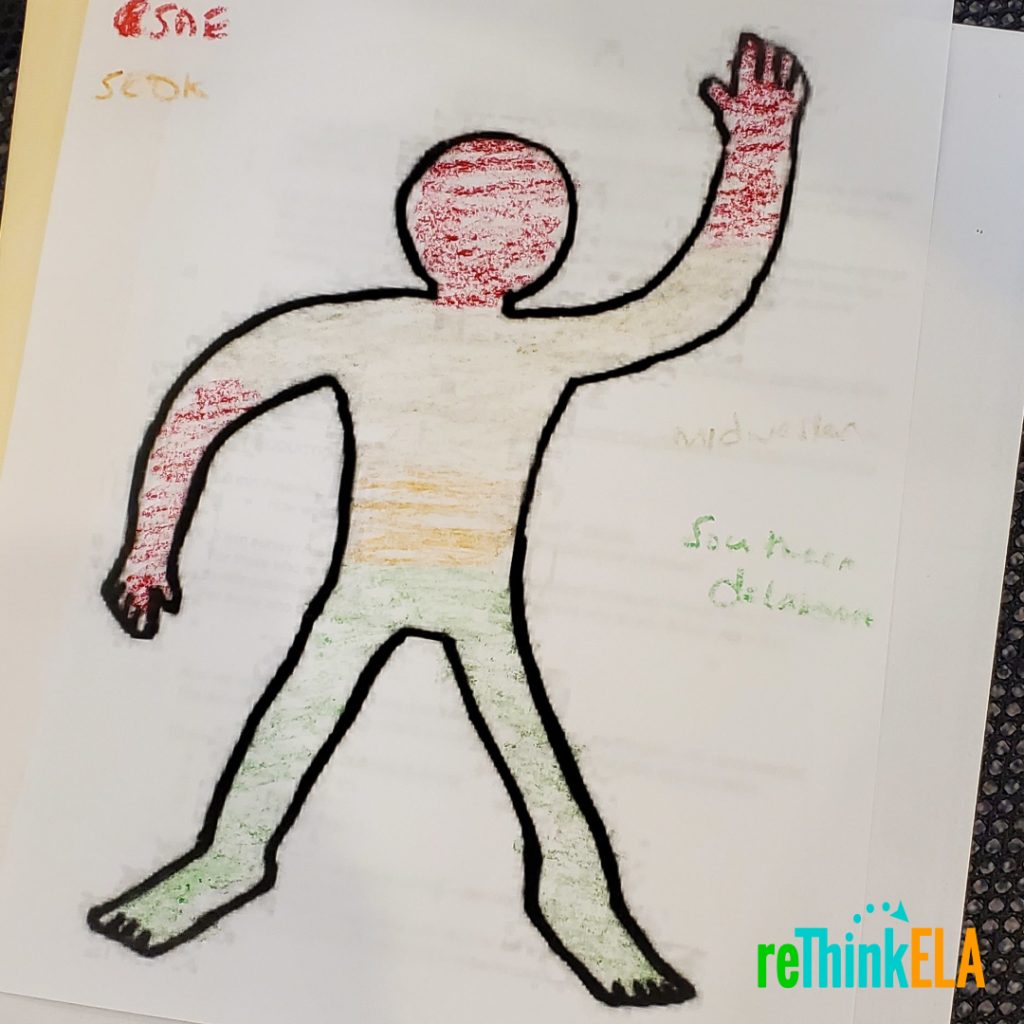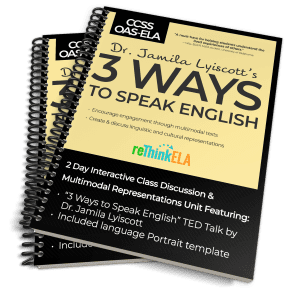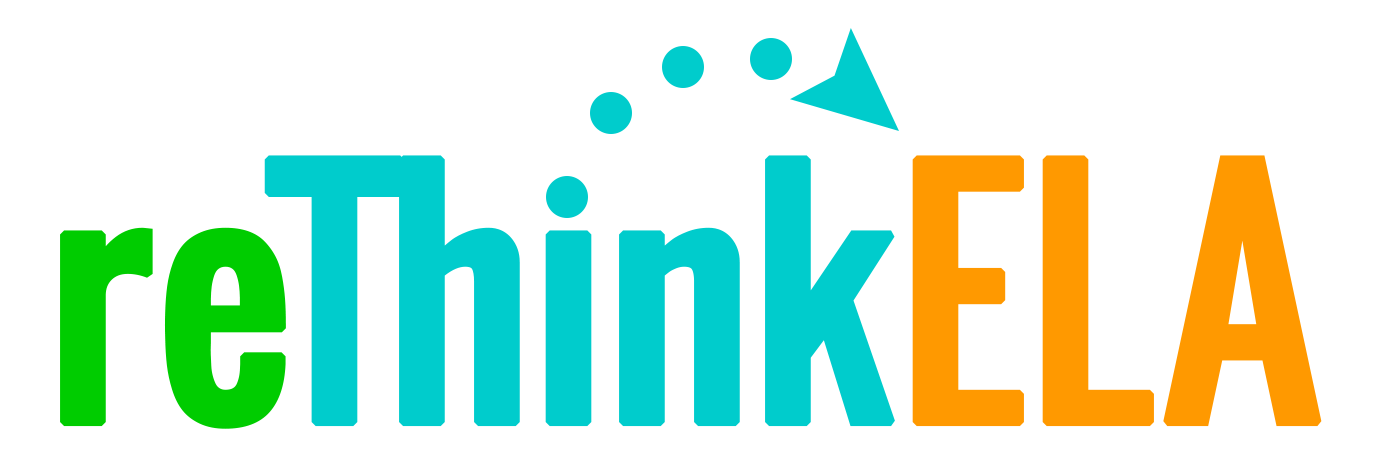
I signed up for Teaching Language -- Theory and Practice in the spring thinking that it would be a class with a lot of theory I've already studied and some nifty little projects I could take back to my classes to help students with their grammar, usage, and mechanics with a little vocabulary instruction thrown in. Instead, after the first day of class, taught by a postdoc instructor who spoke eight languages, I felt like I'd opened the door to Narnia. There was a whole world of linguistic research into multilingualism, and multidialecticalism and how these concepts apply to teaching students who are both learning and using more than one language or dialect. Even more, after writing my own linguistic biography and completing a language portrait, I realized my own monolingualism is not as homogenous as I thought. So when a colleague sent me Dr. Jamila Lyiscott's "3 Ways to Speak English" TED Talk that showed these concepts in action, I knew I had to create a "3 Ways to Speak English" Lesson Plan.
When I first entered a public school classroom, only one student in my classes was clearly bilingual and she was an international exchange student who had been studying English for years. By the time I left the classroom, my small rural high school served a handful of students who were just starting to learn how to speak English and about the same number of students who could spoke two or more languages. Yet during that time, my schools never provided more than 30 minutes of instruction in serving students for whom English is not their first language. Finally, in the spring of 2022, I had the opportunity to be immersed in research related to teaching multilingual students under the guidance of Dr. Madina Djeureva.
After taking Djeureva's course. helping present “Foregrounding students' multlingual repertoires through language and culture portraits” at the University of Oklahoma KEY Conference, and watching Lyiscott's video, I realized students could benefit from thinking about their own linguistic diversity, whether they're in a culturally diverse classroom or not. (After all, this class helped me discover that I grew up in a linguistically diverse household even though everyone speaks English because my father is from southeastern Oklahoma and my mother from Nebraska. If you have ever heard people from both of those regions, you will know the difference!)
While Lyiscott focuses on her specific linguistic heritages, with a particular emphasis on her experience as a Black person in academia, the lessons are relevant to all of us.
According to the TED Talk website:
Jamila Lyiscott is a “tri-tongued orator;” in her powerful spoken-word essay “Broken English,” she celebrates — and challenges — the three distinct flavors of English she speaks with her friends, in the classroom and with her parents. As she explores the complicated history and present-day identity that each language represents, she unpacks what it means to be “articulate.”
Any student who has had someone with a more "standard" dialect correct their English, or make assumptions about their level of intelligence and education, can benefit from thinking critically about where that critique is coming from and what it actually means. to be articulate.
So I wrote a two-day lesson plan that starts with students watching and discussing Lyiscott's video. Afterwards, teachers can share their own multilingualism or multidialecticalism and provide students with a copy of my essay, "A House Divided: My Linguistic Biography." (If you grew up in a household with a Sooner fan and a Cornhusker or Cowboy fan, you'll get this reference.) This can help students from a homogenous language background see how they may communicate in more than one dialect and may be adjacent to languages that they hadn't even realized.
Teachers can then guide students through the process of creating their own language and culture portraits to help them visualize their multilingual identities based on research “‘Red is the colour of the heart': making young children's multilingualism visible through language portraits” published in Language and Education..
Students and teachers in traditionally monolingual contexts may not realize the level of multilingual and multidialectalism they engage in and monolingual teachers serving multilingual learners may not realize the depth and variety of their students' language repertoires. This activity will help make this visible.

This lesson plan is available for free. Just click the button below and sign up for access. (If you're already a Social Justice Writing Project customer, you already have access to this lesson in your member's area.)

